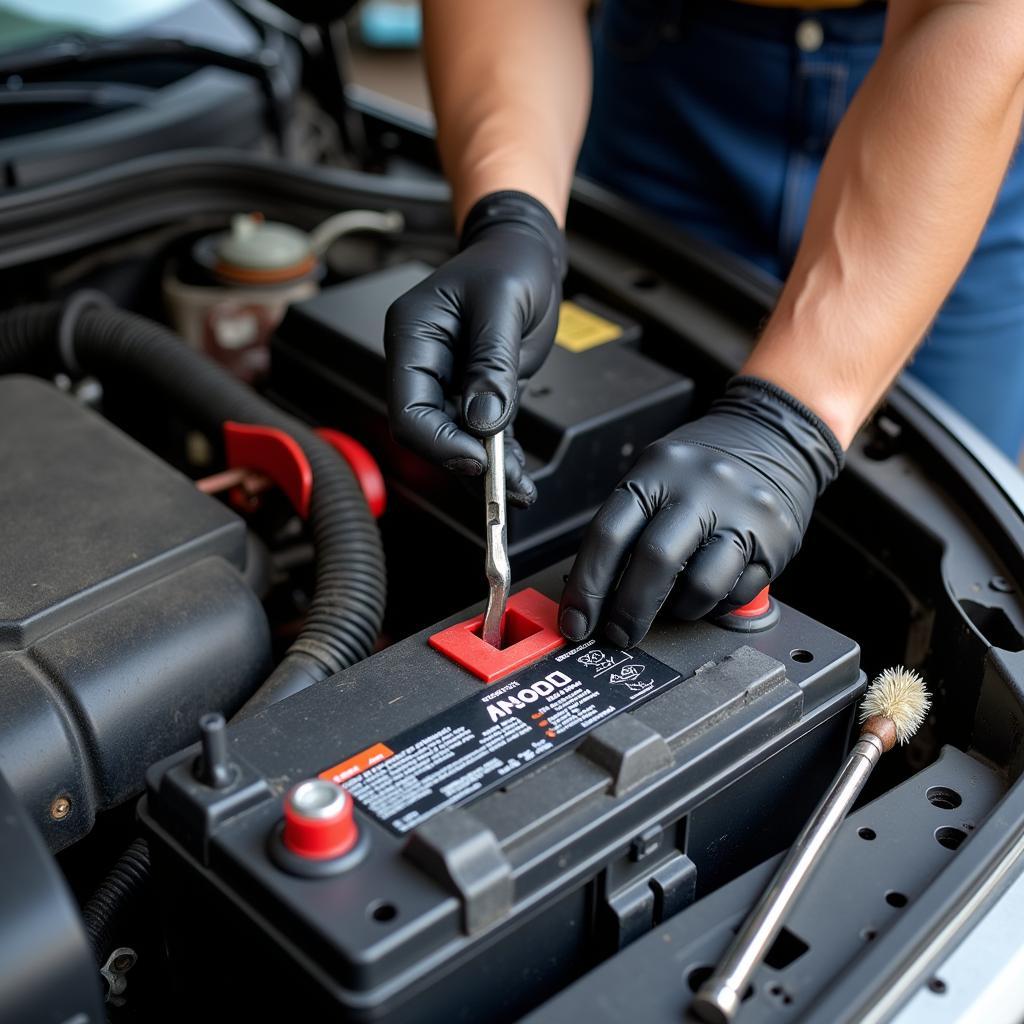Experiencing a dead battery that refuses to start even after a jump? This frustrating situation can leave you stranded and searching for answers. This comprehensive guide dives deep into the reasons why your battery might not be starting after a jump, offering practical troubleshooting steps and solutions to get you back on the road.
Why Won’t My Car Start After a Jump?
Several factors can contribute to a car not starting even after a jump-start. Understanding these potential issues is the first step towards finding a solution. From a faulty alternator to corroded battery terminals, the problem might be simpler than you think.
Common Culprits Behind Jump Start Failures
- Weak or Dead Battery: Even after a jump, a severely depleted or damaged battery might not hold enough charge to start the engine.
- Faulty Alternator: The alternator recharges the battery while the engine is running. A malfunctioning alternator won’t recharge the battery, rendering the jump-start a temporary fix.
- Corroded Battery Terminals: Corrosion on the battery terminals can disrupt the flow of electricity, preventing the jump-start from being effective.
- Bad Starter: The starter motor is responsible for cranking the engine. If the starter is faulty, the engine won’t turn over even with a jump.
- Parasitic Drain: An electrical component in your car may be drawing power even when the ignition is off, draining the battery and making jump-starting ineffective. This could be anything from a faulty interior light to a more complex electrical issue.
- Wiring Problems: Damaged or loose wiring in the starting circuit can prevent the battery from receiving the necessary power to start the engine.
 Checking Car Battery Terminals for Corrosion
Checking Car Battery Terminals for Corrosion
“A common mistake people make is assuming the battery is the problem after a failed jump-start. Often, it’s the alternator that’s the real culprit,” says automotive electrical expert, David Miller, ASE Certified Master Technician.
Troubleshooting a Car That Won’t Start After a Jump
Now that we’ve identified the potential issues, let’s delve into troubleshooting steps to pinpoint the problem.
Step-by-Step Guide to Diagnosing the Issue
- Check the Battery Terminals: Inspect the battery terminals for corrosion. Clean them with a wire brush and baking soda solution if necessary.
- Inspect the Jumper Cables: Ensure the jumper cables are properly connected and in good condition. Frayed or damaged cables can hinder the jump-start process.
- Test the Alternator: With the engine running, disconnect the positive jumper cable. If the engine stalls, the alternator is likely faulty.
- Check the Starter: Listen for a clicking sound when you turn the key. A clicking sound often indicates a faulty starter.
- Look for Parasitic Drains: Use a multimeter to measure the current draw with the ignition off. A significant draw indicates a parasitic drain.
- Inspect Wiring: Check the wiring in the starting circuit for any damage or loose connections.
Solutions and Next Steps
Once you’ve identified the problem, you can take the appropriate steps to fix it.
Getting Your Car Back on the Road
- Replace the Battery: If the battery is old or damaged, replacement is often the best solution.
- Repair or Replace the Alternator: A faulty alternator will need to be repaired or replaced by a qualified mechanic.
- Clean or Replace Battery Terminals: Clean corroded terminals or replace them if they are severely damaged.
- Replace the Starter: A faulty starter requires replacement.
- Address Parasitic Drains: Identify and fix the source of the parasitic drain. This may involve replacing a faulty component or repairing damaged wiring.
- Repair Wiring Issues: Repair any damaged or loose wiring in the starting circuit.
“Don’t underestimate the importance of preventative maintenance. Regular battery checks and cleaning the terminals can prevent many starting problems,” advises Sarah Johnson, Automotive Electrical Engineer.
Conclusion
A battery not starting after a jump can be a frustrating experience. However, by understanding the potential causes and following the troubleshooting steps outlined in this guide, you can quickly diagnose and resolve the issue. Remember, regular maintenance and inspections can help prevent future starting problems and keep your car running smoothly. If you are uncomfortable performing these checks yourself, consider contacting a qualified mechanic or a locksmith program key fob service for assistance. Even simple maintenance such as a reset key fob after changing battery can sometimes resolve related issues. For those looking for convenient key fob programming, searching for a key fob programming locksmith near me or a locksmith key fob programming near me can provide local options. Finally, if you need a dedicated device, researching a key fob programer can be helpful.
FAQ
- Can a jump start damage my car’s computer? While rare, improper jump-starting can potentially damage sensitive electronics. Always follow the correct procedure.
- How long should I let the car run after a jump start? At least 30 minutes to allow the alternator to recharge the battery.
- How often should I replace my car battery? Every 3-5 years, depending on driving conditions and battery type.
- What are signs of a bad alternator? Dim headlights, flickering dashboard lights, and a whining noise from the engine.
- Can I drive with a bad alternator? You can drive for a short distance, but the battery will eventually drain and the car will stall.
- How can I prevent battery corrosion? Apply dielectric grease to the terminals after cleaning them.
- What should I do if my car still won’t start after trying everything? Consult a qualified mechanic for further diagnosis and repair.


